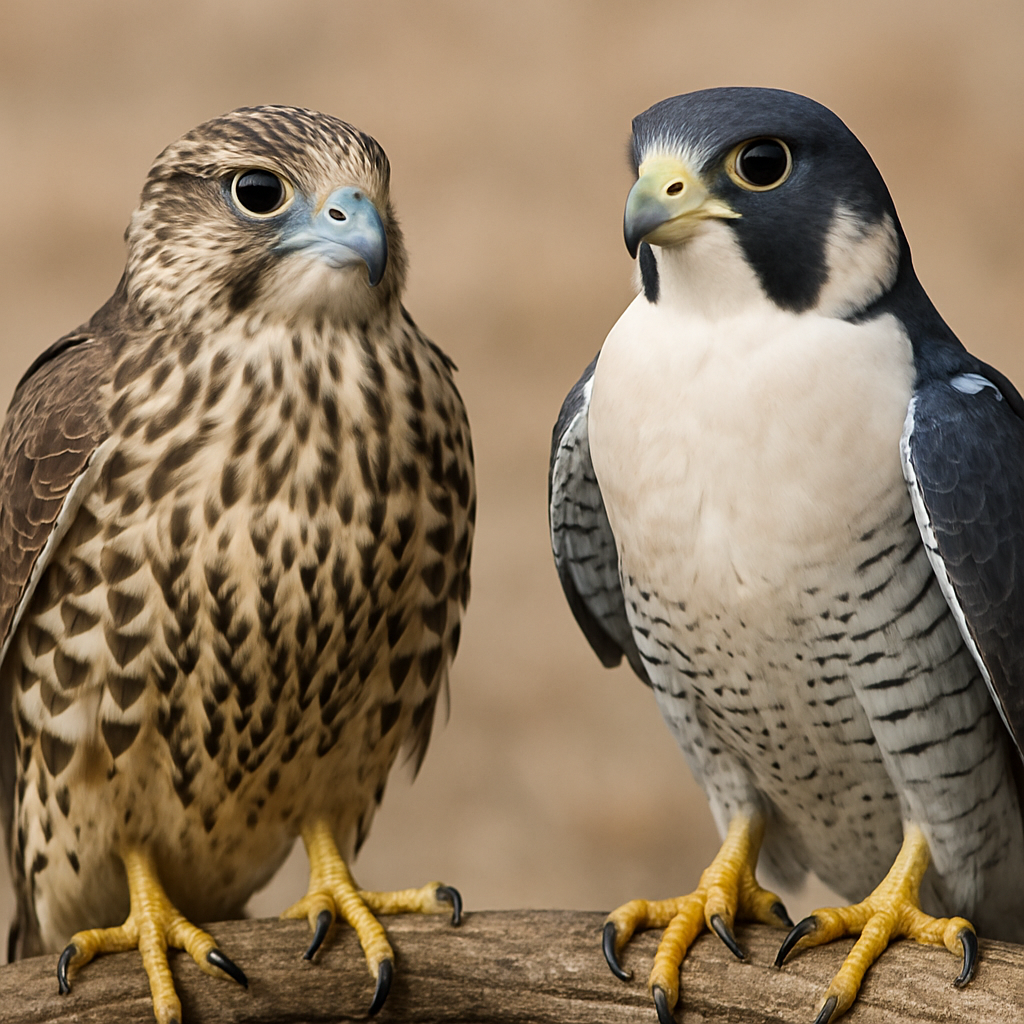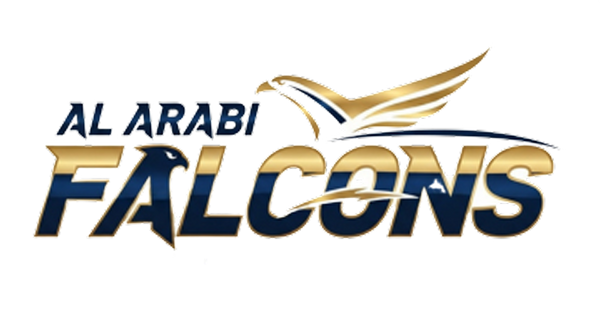
The Ultimate Guide to the Difference Between a Juvenile and an Adult Falcon – A Falconer’s Manual
Share
Introduction to the World of Falcons
Falconry is one of the oldest and most revered traditions in the Arabian Peninsula, deeply rooted in Bedouin culture. A falcon is not just a bird of prey—it symbolizes pride, strength, and mastery. Two of the most essential terms for every falconer to understand are “juvenile” (فرخ) and “adult” (قرناس).
Understanding the subtle differences between these two terms not only helps in identifying the bird’s behavior but also plays a vital role in training, raising, and maintaining the falcon’s health.
What is a Juvenile Falcon?
A juvenile falcon, or "Farkh", is a young bird that has not yet completed its first year of life. It has not gone through its first molting cycle, known as "gernasa".
Features of a Juvenile Falcon:
-
Feathers are soft and dull in color.
-
Generally easier to train.
- Very responsive but easily distracted.
-
Requires careful attention and step-by-step training.
Juvenile falcons are often favored in tournaments for their energy and enthusiasm, though they demand patience and commitment from their trainer.
What is an Adult Falcon?
An adult falcon, or “Gernas”, is one that has completed its first molting cycle, typically after the first year of life. During this time, the feathers are renewed, becoming glossier and more vibrant, and the bird reaches behavioral maturity.
Characteristics of an Adult Falcon:
-
Quieter and more composed.
-
Carries more experience in flight and hunting.
-
Slower to adapt to new training if not practiced regularly.
Experienced falconers often prefer adult falcons due to their stable behavior and advanced skills.
How to Distinguish a Juvenile from an Adult Falcon
There are several ways to tell the difference between the two:
1. Physical Signs:
-
Feathers: Juveniles have dull, mottled feathers; adults have glossy, smooth plumage.
-
Eyes: Juveniles usually have greyish or bluish eyes that darken with age.
2. Behavior:
-
Juveniles are more restless and vocal.
-
Adults are more focused and composed.
3. Molting Condition:
-
New, glossy feathers are a clear sign that the falcon has entered adulthood.
Growth Stages of a Falcon from Hatching to Maturity
Falcons go through distinct phases in their development:
-
Hatching Phase: The chick is weak and immobile.
-
Juvenile Phase: Muscles and bones begin to strengthen, and the bird attempts to stand.
-
Feathering: Feathers start developing, allowing flight preparation.
-
Molting Phase: The falcon undergoes its first molt and enters adulthood.
Molting Seasons in Falcons
Molting is a natural process and a key indicator of a falcon’s maturity. It typically occurs annually in the summer and may last between 3 to 5 months.
Factors Affecting Molting:
-
Balanced diet
-
Exposure to natural light
-
Calm and isolated environment
How Molting Affects the Falcon
Molting can impact a falcon’s physical performance and training.
Care Tips During Molting:
-
Provide protein-rich meals.
-
Reduce physical exertion and long flights.
-
Maintain a clean and stress-free environment.
Training Young Falcons (Juveniles)
Training a juvenile falcon requires patience and structure.
Essential Training Steps:
-
Bonding: Spend time to build trust.
-
Use of a hood: Helps calm the falcon.
-
Hand perching: Training the bird to land on your glove.
-
Short flights: Encourage flight back to the handler.
-
Lure training: Use bait as an advanced tactic.
Training Differences Between Juvenile and Adult Falcons
Each type of falcon reacts differently to training due to age and experience.
Juvenile Falcons:
-
Need foundational training.
-
Learn quickly but are easily distracted.
-
Respond better to positive reinforcement.
Adult Falcons:
-
May have prior training.
-
Slower to adapt but more consistent.
-
Require reminders and reinforcement.
How Age Affects Falcon Performance
Falcon performance is closely tied to age:
|
Age |
Flight Ability |
Training Response |
Hunting Experience |
|
Under 1 year |
High but unstable |
Fast and eager |
Beginner |
|
1–3 years |
Strong and steady |
Balanced |
Advanced |
|
Over 5 years |
Slightly reduced |
Less enthusiastic |
Highly experienced |
Adult falcons are typically favored for hunting trips due to their maturity and reliability.
How to Care for Falcons at Every Life Stage
Each stage requires different types of care:
-
Juveniles: Need warmth, a precise diet, and daily health checks.
-
Adults: Require a peaceful setting, a regulated diet, and scheduled flights.
General Care Tips:
- Do not feed before training sessions.
-
Watch for eye and feather changes as health indicators.
-
Clean the aviary or mews regularly.
Proper Diets for Juveniles and Adults
Nutrition is key to a falcon’s health and performance.
For Juveniles:
- Small pieces of fresh meat.
-
Chicken liver or rabbit meat.
-
Supplemented vitamins in food or water.
For Adults:
- Medium-sized daily meals.
- Occasional fasting to control weight.
-
Small bones and feathers for digestion.
Hunting Differences Between Juvenile and Adult Falcons
Juveniles are impulsive and energetic, while adults use precision and experience.
|
Juvenile |
Adult |
|
Hunts with energy |
Hunts with skill |
|
May wander far from handler |
Returns easily to trainer |
|
Requires close supervision |
More independent |
Falcons in Festivals and Competitions
Across the Gulf—especially in Saudi Arabia, Qatar, and the UAE—falconry tournaments are held with separate categories for juveniles and adults.
Judging Criteria:
-
Flight speed
-
Precision in strike
-
Response to commands
Separate categories ensure fairness between the different age groups.
Common Mistakes in Falconry
-
Misidentifying the age stage leading to inappropriate training.
-
Poor feeding habits causing obesity or malnutrition.
-
Neglect during molting affecting health and flight ability.
Avoiding these mistakes helps your falcon stay healthy and responsive.
FAQs About Juvenile and Adult Falcons
1. What’s the main difference between juvenile and adult falcons?
Juveniles haven’t molted yet; adults have completed their first molt.
2. Are juvenile falcons easier to train?
Yes, they are more responsive but need more attention and consistency.
3. What’s the ideal age for hunting?
Between 1 to 5 years old is the prime hunting age.
4. Does molting affect a falcon’s performance?
Yes, performance drops during molting, and activity should be reduced.
5. How can I tell juvenile feathers from adult ones?
Juvenile feathers are mottled and dull; adult feathers are sleek and shiny.
6. Can falcons live beyond 10 years?
Yes, with proper care, some falcons live up to 20 years.
Conclusion: How to Choose the Right Falcon for You
Your choice depends on your experience level, purpose, and time investment. Beginners may prefer juveniles for hands-on training, while seasoned falconers often choose adults for their experience and reliability.
Whether you choose a juvenile or adult falcon, remember that consistent care, proper diet, and smart training are key to success in the noble art of falconry.
